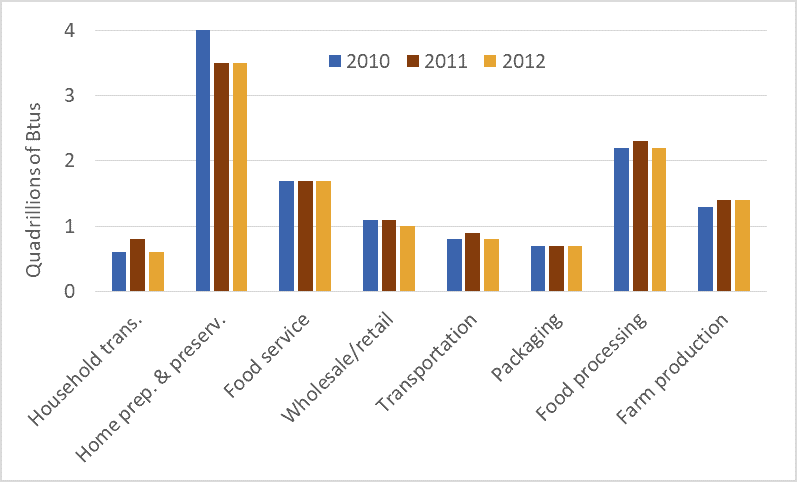Humans eat food and food gives us energy. Some humans use some of that energy to move their bodies and limbs to produce more food. Our great-grandparents ate hearty breakfasts and used some of that food energy to power their work in fields or gardens. Here’s the important part: until the fossil fuel age, our food production work had to produce more energy than it required. We had to achieve positive returns on our energy investments. If we expended 1 Calorie of energy working in the field, the resulting food had to yield 3, 4, 5, or more Calories, or else we and those who depended upon us would starve.
Pioneering research by David and Marcia Pimentel and others show that traditional food systems yielded positive returns. The Pimentels’ book, Food, Energy, and Society, documents that for every unit of energy that a traditional farmer (i.e., no fossil fuels) put into cultivating and harvesting corn or other crops, that farmer received back 5 to 10 units. For almost the entire 10,000-year history of agriculture, food systems were net energy producers. Food powered societies and civilizations.
In the 20th century we did something unprecedented: we turned human food systems from energy sources into energy sinks. Today, for every Calorie consumed in North America, 13.3 Calories (mostly in the form of fossil fuels) have been expended. This calculation includes all energy use in the food system: farm production, transport, processing, packaging, retailing, in-home food preservation and cooking, energy use in restaurants, etc. It also takes into account the fact that 30 to 40 percent of all food produced is thrown away.
Traditional food systems generated an energy return on investment (EROI) of between 5:1 and 10:1. Because our modern food system returns one unit of energy for every 13.3 invested, the EROI works out to just 0.08:1.*
The graph above shows energy use in the US food system in the years 2010, 2011, and 2012. The data is from a recent report published by the USDA. It shows very high levels of energy use throughout the entire food system. Perhaps surprising, aggregate food-related energy use in US homes—running refrigerators, powering ovens, washing dishes—far exceeds aggregate energy use on US farms. Similarly, energy use in food services (food served in restaurants, hospitals, prisons, care homes, etc.) also exceeds energy use on farms. This data shows that the entire food system is very energy costly. As we’re forced to curtail fossil fuel use we will be forced to dramatically transform all parts of our food systems.
* This comparison does not take into account the firewood used to cook meals in traditional systems. But even taking that into account we still find that traditional systems have EROI values that were (and are) large multiples of the EROI values for fossil-fueled systems.
Graph source: Canning, Rehkamp, Waters, and Etemadnia, The Role of Fossil Fuels in the U.S. Food System and the American Diet (USDA, 2017)

